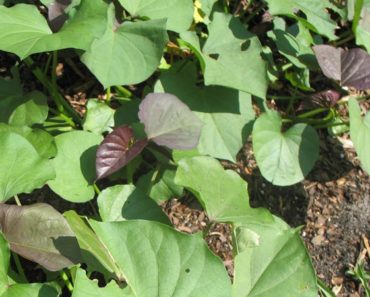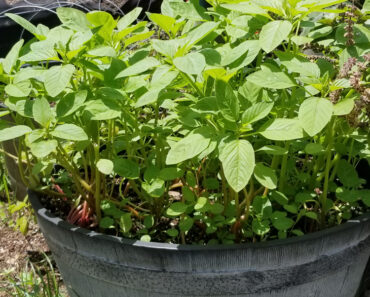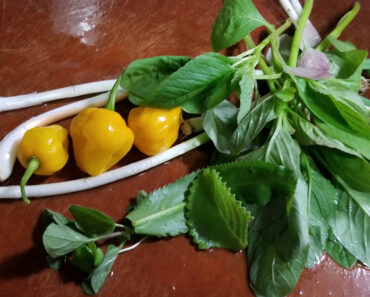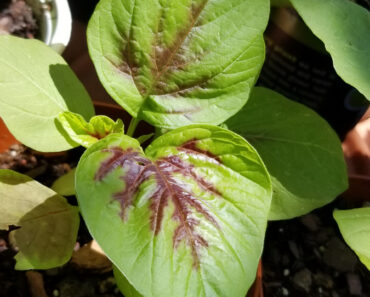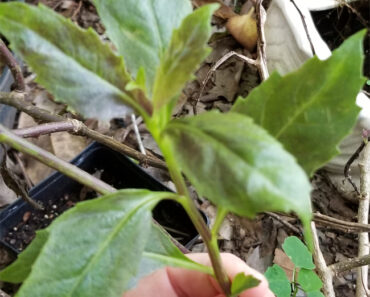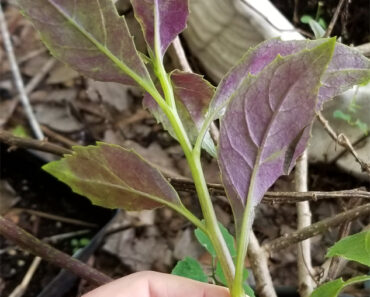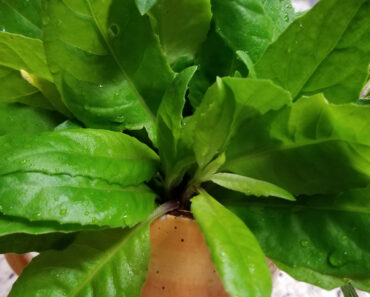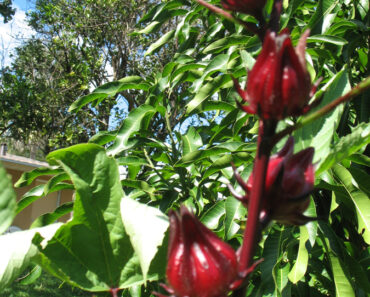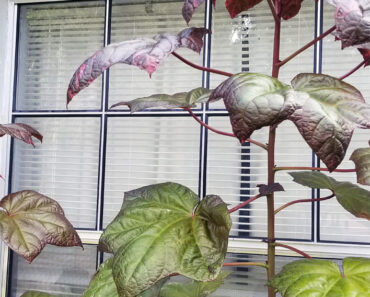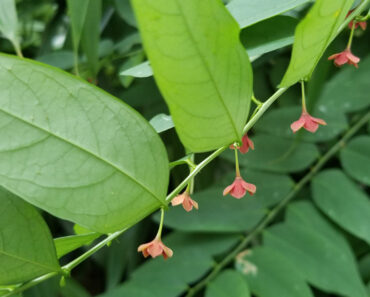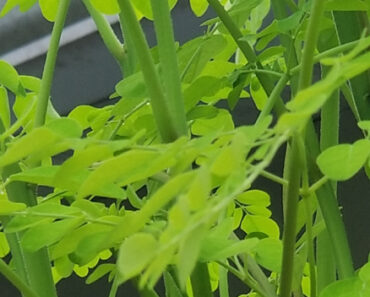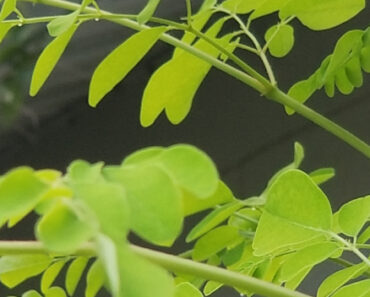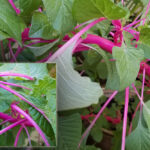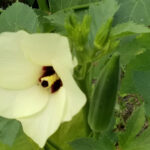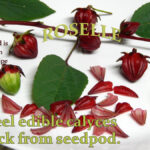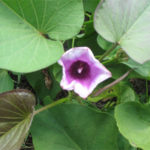Before my grandfather came to Central Florida to pick citrus, my mother’s family were tenant farmers in Northern Alabama. This was during The Great Depression. Even though they grew corn, sweet potatoes, blackeyed peas and produce, the land was not their own. Some portion of what they grew would go to satisfy the landlord. Some potion of the blackeyed peas were needed to keep their one milk cow healthy during winter. My mother said it was a wonder they didn’t all starve to death.
Now here’s the thing that gets me. My mother’s uncle was an acknowledged expert on sweet potatoes. And yet neither my mother nor grandparents ever mentioned eating sweet potato greens. Did they even know that the young leaves are highly nutritious? Read Sweet potato leaves for family nutrition: Overview of research for more information about sweet potato leaf nutrition.
Perhaps some reluctance to consider sweet potato greens as a food source comes from an old confusion between yams and sweet potatoes in The South. In fact, yams and sweet potatoes are not related. Incidentally, I am growing purple yam, Ube, for the first time this summer. After harvest I may have something to say on that topic.
One benefit of the internet has been our ability to communicate and exchange knowledge with gardeners from various parts of the world. In this way we not only make new friends, but also discover some useful plants for our climate. For me, this has been particularly beneficial when it comes to summer greens.
This post is only meant to offer quick snapshots of those summer greens that I have grown and enjoyed. By no means is this a complete list of the possible options, and we seem to learn about additional edible greens every year.
When adding any of these greens to the cook pot, always add just before you’re ready to remove from heat. They will do best when not overcooked. They can also be enjoyed eaten fresh in salads. Always go slow when first sampling greens that are new to your digestive system. Select fresh new leaves, wash and taste. If this seems acceptable, try a small quantity lightly cooked.
Whitwam’s Organics is a good starting point, when looking for Florida-friendly summer greens to add to your edible landscape.
Comments: The Plants
While Sweet Potatoes are not perennial, any fragment of stem or tuber left in the ground is likely to sprout the following spring. New plants are easily sprouted by saving back a tuber or two for that purpose. See my post on Sweet Potatoes.
Callaloo is annual, but collecting and starting more plants from seed couldn’t be simpler. This is an excellent choice for nutritious summer greens. I have been asked if insect pests are an issue. My experience has been that when the leaves are young, no. The pests seem to arrive as the plants begins to flower. So this could be an issue if growing amaranth as a seed crop. No issues for me so far, when growing for tender young leaves.
See my post Roselle and Her Relatives for my comments about Roselle, False Roselle and South Sea Salad Tree. I will merely repeat that all of these hibiscus relatives have excellent nutritional value, as well as ornamental appeal.
Longevity Spinach and Okinawa Spinach are not spinach. They are perennial hot climate spinach substitutes that do well in Florida. Longevity can take quite a bit of shade, but I’d give Okinawa Spinach more sun. Both could be used as edible ground cover. Okinawa in particular is very ornamental, its leaves being purple underneath.
A gardener might achieve a pretty planting of Okinawa Spinach growing as a ground cover beneath False Roselle or Auntie Lilli’s Salad Tree. Who would ever guess the wealth of nutrition in such a planting?
Katuk is fairly new to me. This was only my second summer growing the delicious perennial. The leaves are often described as tasting like peas, and the tiny fruit growing along the undersides of stems are nutty and crunchy. I find that the tender young leaves have a pleasant, fresh taste. This morning I chopped some tender Katuk shoots into scrambled eggs with a little cheese and Garlic Chives. It was very good. While my katuk lost leaves after a frost last winter, the plant came back quickly once temps began to rise. I’m not sure how much farther north of Orlando it can be grown as a perennial. If in doubt, take cuttings before cold weather sets in.
Baker Creek offers seed for a Dwarf Moringa that, while called dwarf, grows rapidly, and quite tall. I have to chop mine back a couple of times each summer. That’s ok. The chopped plant material can become compost or used to mulch other plants. It is never wasted. You do want to prune often. When growing for perennial greens, you really want a good supply of the crisp and spicy new shoots. One common name for Moringa is Horseradish Tree. Moringa will drop its leaves after a frost, but mine has always come back. Moringa is often referred to as a superfood. I refer to it ass a very desirable perennial vegetable for my garden.
Moringa is starting to get a reputation as somewhat invasive in Florida. This shouldn’t be an issue if the plant is regularly pruned. For ease in harvesting, I don’t like to let mine grow much taller than my head.
